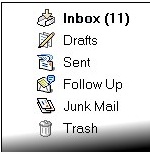Perfect Pitch
- How to begin? This is absolutely the most important sentence in the entire pitch. It has to be like Renee Zellweger’s line in the movie Jerry Maguire when she says to Tom Cruise, “You had me at hello.” If you can’t captivate the reporter with your hello, you’re less likely to keep them interested to read on about your client.
Start with a question. Lead with a set of three current news trends related to your topic. Or begin with the newsworthy impact of a just-released study. Too often, I see pitches where PR professionals lead with the name of their client, their credentials and some announcement that the media relations executive thinks is important. Turn that pitch upside down and take the news and put it on top.
Survey results may be interesting, but what is the impact of those results? A client who makes a coveted spot on an important industry-ranking list is newsworthy—but only to the client. You need to turn that into news. So for example: Say your client is a 5-time winner of this recognition and that turns out to be since the inception of the award. An interesting story might be what other winners are in the same pool? A reporter might want to interview them and do a round-up of what made them successful.
- Where to introduce your client? The best pitches I’ve seen introduce the client no sooner than the end of the pitch letter’s first paragraph, and sometimes, all the way at the end. A story I did for the Wall Street Journal about using personality testing in hiring professionals didn’t tell me about the client until the end of the letter. The client, a organizational psychology firm that created and implemented a personality test used in hiring, was widely quoted in the story.
- How long should the pitch letter be? The shorter the better. I have been known to say if you can’t tell your story in 50 words or less, you’ll lose the reporter’s interest. Why 50 words? That is the amount of space on a Blackberry screen—often where reporters are reading your pitches. The truth is, the story idea should be in the first 50 words—but a good rule of thumb is: Good pitches shouldn’t be more than one page. As a communications expert, you should be able to get all the relevant and salient information in a limited amount of space.
- What else to include? Again, less is more but make sure when you re-read your pitch—you’ve given the reporter a story to pursue. To do that, you might need to add some independent research or other nuggets of knowledge to help craft the story line.
And finally, just as a reporter wouldn’t let a story go to print or go live online without a good read and line edit from an editor, you too can certainly benefit with the help of a second set of eyes or an editor.
To reach Toddi:
Phone: 212.840.1661
Email: toddi@blisspr.com
Twitter: @toddigutner
LinkedIn: Toddi Gutner
